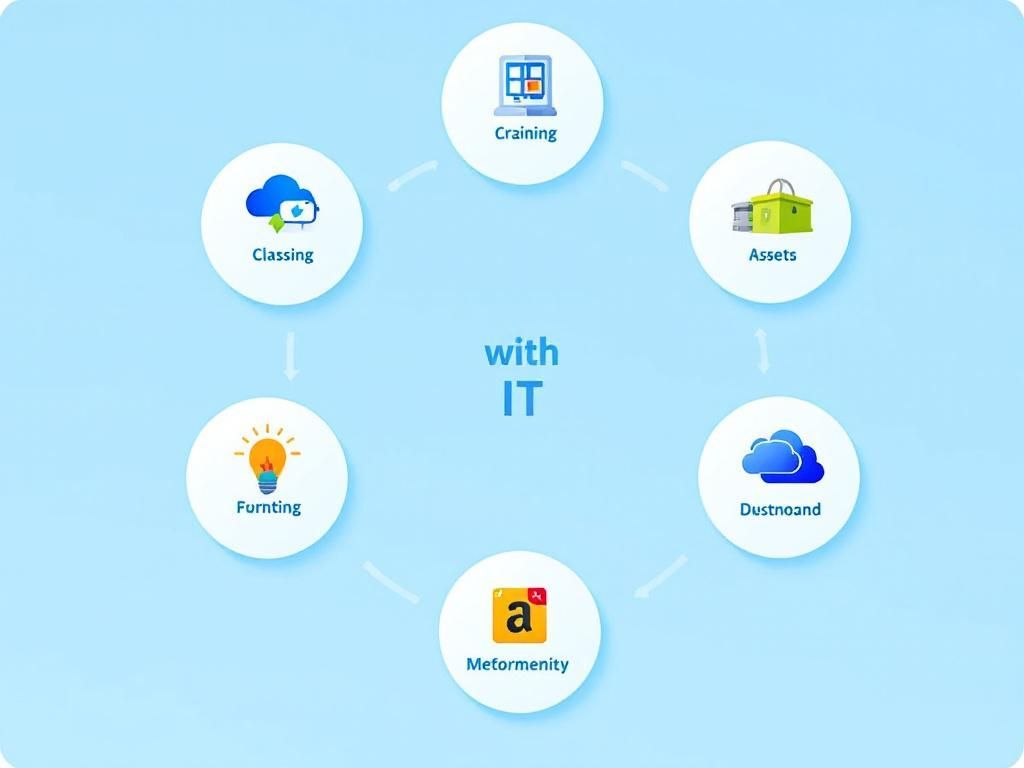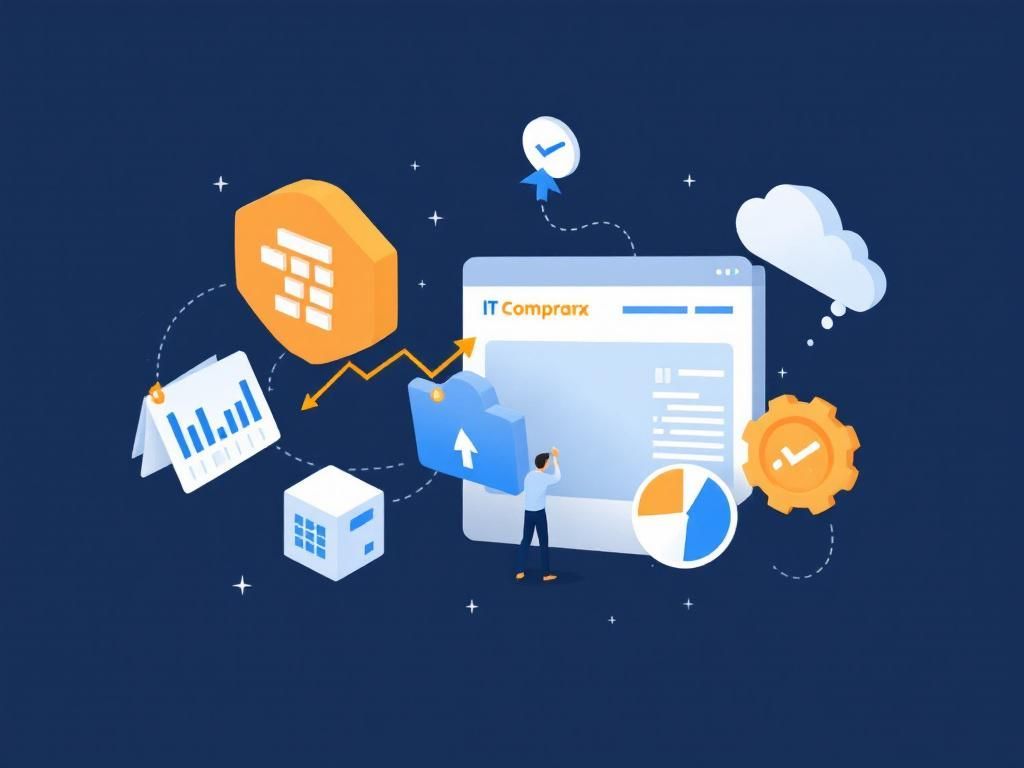Maximize Efficiency with Patch Management Automation
Discover how patch management automation can enhance efficiency, reduce risks, and save time in your IT operations.

In an era where cybersecurity threats are on the rise and the number of software applications used in organizations continues to grow, effective patch management has never been more critical. Keeping software up to date is essential not only for security but also for performance and compliance. However, manually managing patches can be a daunting task that often leads to errors, delays, and security vulnerabilities. Automating patch management processes can help organizations maximize efficiency and minimize risk. This article delves into the significance of patch management automation, its benefits, and best practices to implement it successfully.
Table of Contents
Understanding Patch Management
Patch management refers to the process of identifying, acquiring, installing, and verifying patches for products and systems. It involves several key steps:
- Identification: Knowing which patches are applicable to the systems in use.
- Acquisition: Obtaining the necessary patches from vendors or repositories.
- Testing: Assessing the impact of patches in a controlled environment.
- Deployment: Applying patches to systems.
- Verification: Ensuring patches have been successfully applied and systems are functioning correctly.
The Importance of Automation in Patch Management
Automating the patch management process can significantly enhance the efficiency and effectiveness of an organization’s IT operations. Below are some primary reasons to consider automation:
1. Time Savings
Manual patch management can be a time-consuming process. Automation can:
- Reduce the time spent on repetitive tasks.
- Streamline the identification and deployment of patches.
- Free up IT staff to focus on strategic initiatives.
2. Enhanced Security
Unpatched vulnerabilities are a major attack vector for cybercriminals. By automating patch management, organizations can:
- Ensure timely deployment of critical security patches.
- Reduce the window of exposure to vulnerabilities.
- Maintain compliance with security standards and regulations.
3. Improved Accuracy
Human error is a significant risk in manual patch deployment. Automation helps to:
- Minimize errors related to missed patches or incorrect installations.
- Provide consistent application of patches across all systems.
- Ensure accurate reporting and record-keeping.
4. Scalability
As organizations grow, so do their IT environments. Automated patch management allows for:
- Easy scalability to accommodate new systems and applications.
- Centralized management of patches across diverse infrastructures.
- Integration with other IT management tools for seamless operations.
Best Practices for Implementing Patch Management Automation
To achieve the best results from patch management automation, consider the following best practices:
1. Assess Current Patch Management Processes
Before implementing automation, assess your current patch management processes to identify:
- Strengths and weaknesses in your approach.
- Tools currently in use and their effectiveness.
- Areas where automation could provide immediate benefits.
2. Choose the Right Automation Tools
Selecting the right tools is crucial for successful patch management automation. Look for tools that offer:
- Compatibility with various operating systems and applications.
- User-friendly interfaces that simplify management tasks.
- Comprehensive reporting capabilities for tracking patch statuses.
3. Develop a Clear Patch Management Policy
A well-defined patch management policy should include:
- Roles and responsibilities for patch management.
- Frequency of patch assessments and updates.
- Criteria for prioritizing patches based on severity.
4. Implement a Testing Phase
Before deploying patches across the organization, implement a testing phase to:
- Assess the impact of patches on critical systems.
- Identify and mitigate potential issues before full deployment.
- Document outcomes to refine future patch processes.
5. Monitor and Report
Continuous monitoring and reporting are essential for effective patch management. This includes:
- Tracking the status of patches across all systems.
- Regularly reviewing compliance with patch management policies.
- Adjusting strategies based on monitoring data and emerging threats.
Challenges in Patch Management Automation
While automation can significantly enhance patch management, it is not without challenges. Some common challenges include:
1. Complexity of IT Environments
Many organizations operate in complex environments with diverse technologies, making it difficult to implement a one-size-fits-all solution.
2. Resource Constraints
Not all organizations have the necessary resources to implement comprehensive automation tools, which can limit the effectiveness of patch management.
3. Change Resistance
Personnel may resist changes to existing processes or feel overwhelmed by new automation tools. Communication and training are essential to mitigate this.
Conclusion
Patch management automation is a critical component for organizations aiming to enhance their cybersecurity posture while maximizing operational efficiency. By following best practices, choosing the right tools, and regularly monitoring processes, businesses can transform their patch management from a cumbersome chore into a streamlined operation. In doing so, they not only shield themselves from potential vulnerabilities but also enable their IT teams to focus on innovation and growth.
FAQ
What is patch management automation?
Patch management automation is the process of using software tools to automatically identify, deploy, and manage updates and patches for software applications and operating systems, ensuring that systems remain secure and up-to-date.
Why is patch management automation important?
It is important because it reduces the risk of security vulnerabilities, minimizes downtime, and saves time and resources by streamlining the patching process, allowing IT teams to focus on more strategic tasks.
How does patch management automation enhance efficiency?
Patch management automation enhances efficiency by automating repetitive tasks, providing real-time visibility into patch status, and enabling faster response to vulnerabilities, which helps organizations maintain compliance and security.
What are the benefits of using automated patch management tools?
The benefits include improved security, reduced manual effort, faster deployment of patches, better compliance tracking, and the ability to manage patches across multiple systems and environments seamlessly.
Can patch management automation help with compliance requirements?
Yes, patch management automation can help organizations meet compliance requirements by ensuring that all systems are regularly updated and documented, demonstrating adherence to industry standards and regulations.
What should I look for in a patch management automation solution?
Look for features such as comprehensive reporting, scheduling capabilities, support for multiple platforms, ease of integration with existing systems, and user-friendly interfaces to maximize effectiveness.








